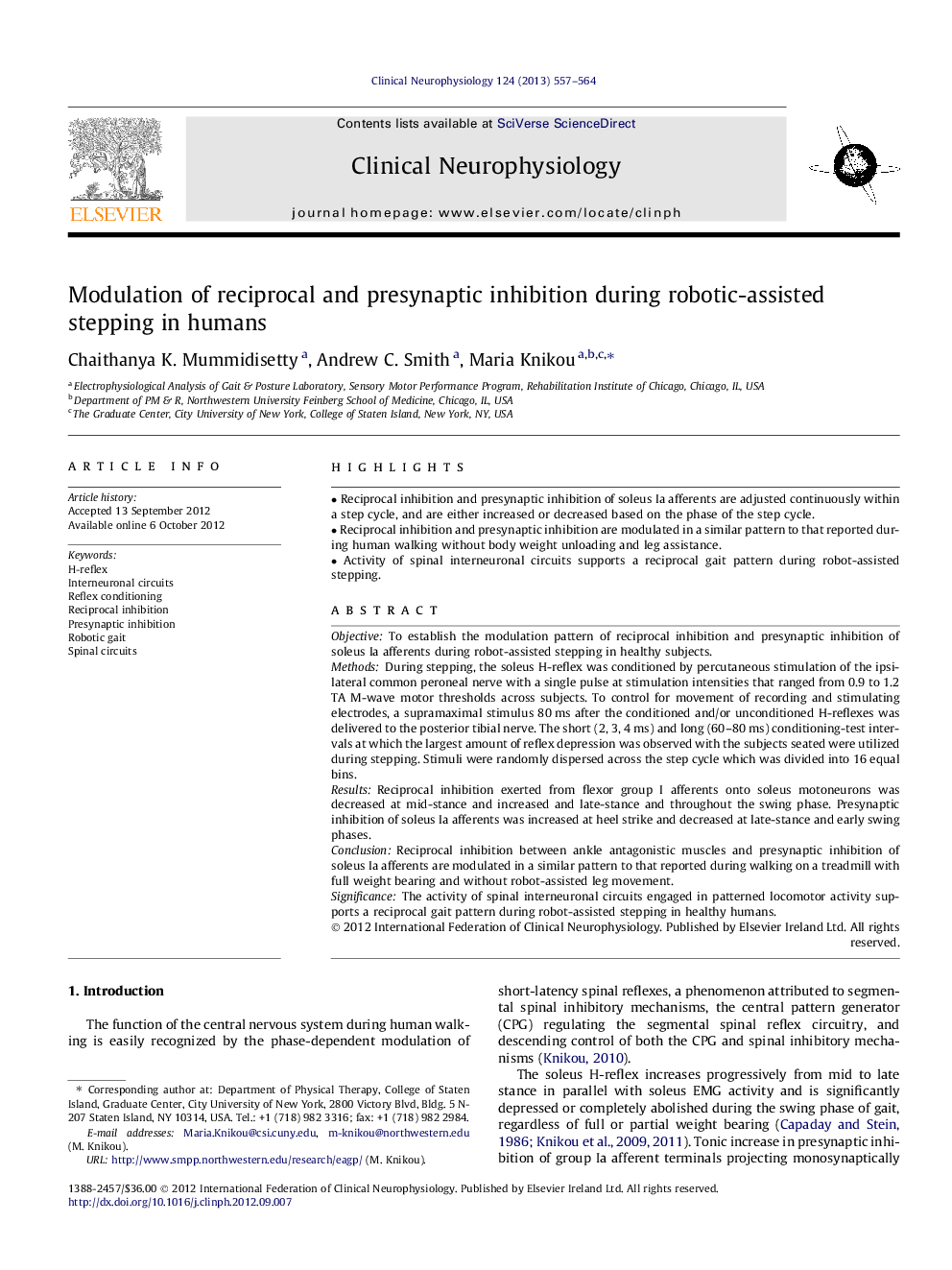| کد مقاله | کد نشریه | سال انتشار | مقاله انگلیسی | نسخه تمام متن |
|---|---|---|---|---|
| 3044369 | 1184998 | 2013 | 8 صفحه PDF | دانلود رایگان |

ObjectiveTo establish the modulation pattern of reciprocal inhibition and presynaptic inhibition of soleus Ia afferents during robot-assisted stepping in healthy subjects.MethodsDuring stepping, the soleus H-reflex was conditioned by percutaneous stimulation of the ipsilateral common peroneal nerve with a single pulse at stimulation intensities that ranged from 0.9 to 1.2 TA M-wave motor thresholds across subjects. To control for movement of recording and stimulating electrodes, a supramaximal stimulus 80 ms after the conditioned and/or unconditioned H-reflexes was delivered to the posterior tibial nerve. The short (2, 3, 4 ms) and long (60–80 ms) conditioning-test intervals at which the largest amount of reflex depression was observed with the subjects seated were utilized during stepping. Stimuli were randomly dispersed across the step cycle which was divided into 16 equal bins.ResultsReciprocal inhibition exerted from flexor group I afferents onto soleus motoneurons was decreased at mid-stance and increased and late-stance and throughout the swing phase. Presynaptic inhibition of soleus Ia afferents was increased at heel strike and decreased at late-stance and early swing phases.ConclusionReciprocal inhibition between ankle antagonistic muscles and presynaptic inhibition of soleus Ia afferents are modulated in a similar pattern to that reported during walking on a treadmill with full weight bearing and without robot-assisted leg movement.SignificanceThe activity of spinal interneuronal circuits engaged in patterned locomotor activity supports a reciprocal gait pattern during robot-assisted stepping in healthy humans.
► Reciprocal inhibition and presynaptic inhibition of soleus Ia afferents are adjusted continuously within a step cycle, and are either increased or decreased based on the phase of the step cycle.
► Reciprocal inhibition and presynaptic inhibition are modulated in a similar pattern to that reported during human walking without body weight unloading and leg assistance.
► Activity of spinal interneuronal circuits supports a reciprocal gait pattern during robot-assisted stepping.
Journal: Clinical Neurophysiology - Volume 124, Issue 3, March 2013, Pages 557–564